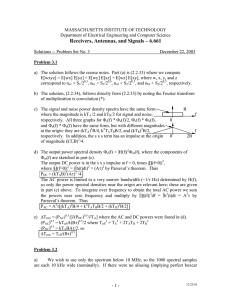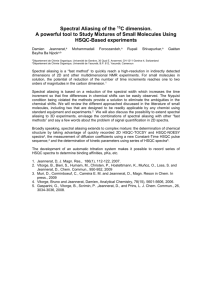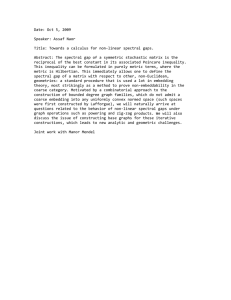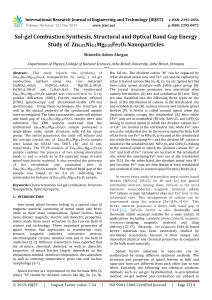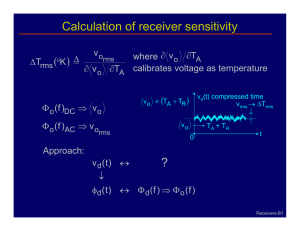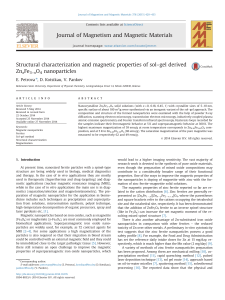MASSACHUSETTS INSTITUTE OF TECHNOLOGY Department of Electrical Engineering and Computer Science Issued:
advertisement
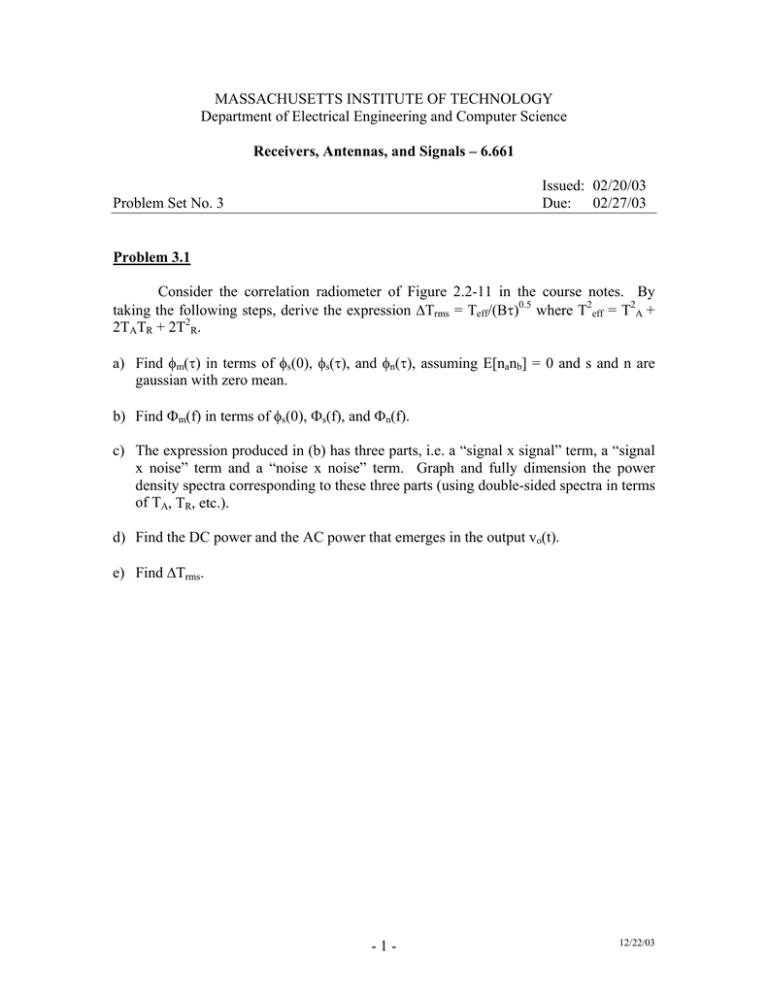
MASSACHUSETTS INSTITUTE OF TECHNOLOGY Department of Electrical Engineering and Computer Science Receivers, Antennas, and Signals – 6.661 Issued: 02/20/03 Due: 02/27/03 Problem Set No. 3 Problem 3.1 Consider the correlation radiometer of Figure 2.2-11 in the course notes. By taking the following steps, derive the expression ∆Trms = Teff/(Bτ)0.5 where T2eff = T2A + 2TATR + 2T2R. a) Find φm(τ) in terms of φs(0), φs(τ), and φn(τ), assuming E[nanb] = 0 and s and n are gaussian with zero mean. b) Find Φm(f) in terms of φs(0), Φs(f), and Φn(f). c) The expression produced in (b) has three parts, i.e. a “signal x signal” term, a “signal x noise” term and a “noise x noise” term. Graph and fully dimension the power density spectra corresponding to these three parts (using double-sided spectra in terms of TA, TR, etc.). d) Find the DC power and the AC power that emerges in the output vo(t). e) Find ∆Trms. -1- 12/22/03 Problem 3.2 A digital 1-bit autocorrelation spectrum analyzer is to be designed with a frequency resolution of 10 kHz. The autocorrelation function is to be apodized with a weighting function that reduces spectral resolution by a factor of 1.4 relative to uniform weighting, while significantly reducing spectral sidelobes. Approximately 1000 independent spectral intervals are desired at the output, distributed over a 10-MHz band. The effects of aliasing can be made acceptably low for the given input r.f. filter if the 1-MHz spectral region just above the desired 1-MHz band is not aliased into that desired band. Note that both apodization and aliasing increase the number of taps required. |H(f)|2 1 MHz a) f 10 MHz What is the slowest sampling rate consistent with the foregoing requirements? b) How many stages are required for the shift register? 0 Problem 3.3 a) Prove that a conjugate match ZL = R - jX maximizes the power transferred from a Thevenin source characterized by the impedance R + jX. This maximum is the "available power" if R > 0. Assume the source impedance is fixed, and that of the load is varied to yield the desired maximum. b) Recalling that the wave reflection coefficient from a load at the end of a TEM line with characteristic impedance Zo is Γ = V-/V+ = (ZLn - 1)/(ZLn + 1), what is the exchangeable gain Ge of a negative-resistance load -RL? -RL We define ZLn = ZL/Zo. This amplifier works by reflecting a signal in a TEM line from a negative resistance load which is preceded by a three-port circulator (discussed later in the course; see Eqn. 2.3.37 in the text) that sends the reflected signal out a different TEM port than the port through which the input signal entered the amplifier. The negative-resistance load is often a tunnel diode biased to its negative resistance point. -2- 12/22/03
